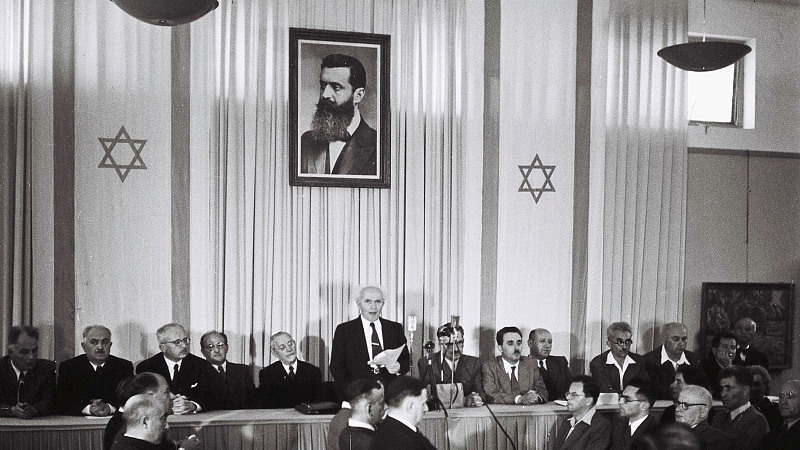
In this handout from the GPO, David Ben Gurion, who was to become Israel's first Prime Minister, reads the Declaration of Independence on May 14, 1948 at the museum in Tel Aviv, during the ceremony founding the State of Israel. /CFP
In this handout from the GPO, David Ben Gurion, who was to become Israel's first Prime Minister, reads the Declaration of Independence on May 14, 1948 at the museum in Tel Aviv, during the ceremony founding the State of Israel. /CFP
1948
Israel declares independence
Following the United Nations' historic partition plan in 1947, which recommended the creation of separate Jewish and Arab states in the British Mandate of Palestine, Israel declared its independence on May 14, 1948. However, the immediate aftermath of independence was marred by conflict with neighboring Arab states, leading to the first Arab-Israeli War. Israel's victory in the war helped it secure parts of the Palestinian territories designated by the UN partition plan. The war caused at least 700,000 Palestinian refugees to flee their homes in a mass exodus.
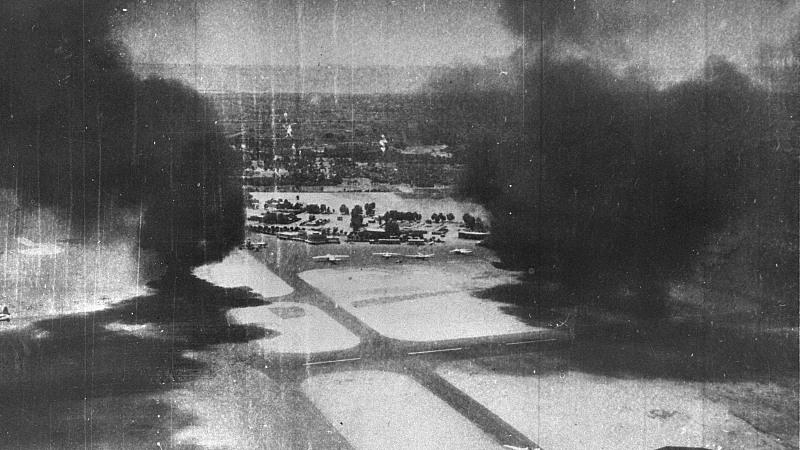
Smoke rises from destroyed Egyptian airplanes during an Israeli Air Force preemptive strike on June 5, 1967, against Egyptian airfields at the start of the Six-Day War. /CFP
Smoke rises from destroyed Egyptian airplanes during an Israeli Air Force preemptive strike on June 5, 1967, against Egyptian airfields at the start of the Six-Day War. /CFP
1967
Six-Day War
The Six-Day War, which occurred in June 1967, was a brief but highly significant conflict that involved Israel, Egypt, Jordan and Syria. Over the course of six days, Israel achieved a swift and significant military victory, capturing the Sinai Peninsula and Gaza Strip from Egypt, the West Bank and East Jerusalem from Jordan, and the Golan Heights from Syria. On November 22, the UN Security Council passed Resolution 242, which called for Israeli withdrawal from territories it gained from the conflict.
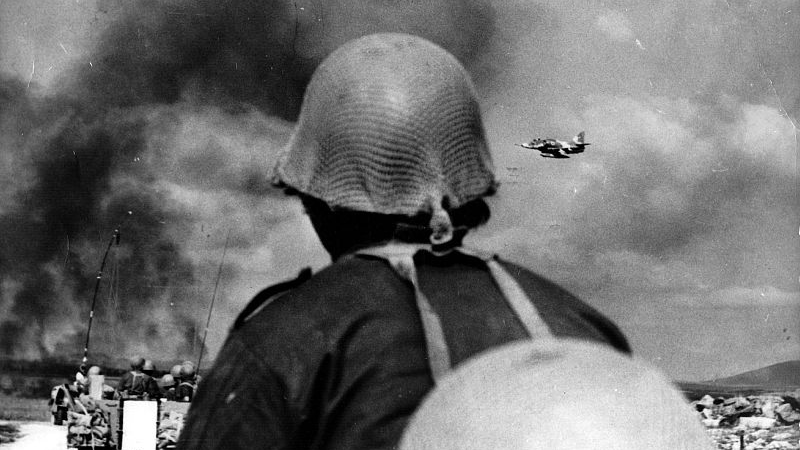
A Skyhawk levels for a ground attack to aid an Israeli infantry column during the battle for the Golan Heights in the Yom Kippur War. /CFP
A Skyhawk levels for a ground attack to aid an Israeli infantry column during the battle for the Golan Heights in the Yom Kippur War. /CFP
1973
Yom Kippur War
The Yom Kippur War, also known as the October War or the 1973 Arab-Israeli War, was a pivotal conflict that erupted on October 6, 1973, as Egypt and Syria attempted to take back the Israeli-occupied Sinai Peninsula and Golan Heights. Meanwhile, the Organization of the Petroleum Exporting Countries (OPEC) began an oil embargo on countries that support Israel, and the price of oil skyrocketed. After a ceasefire was brokered by the United States and the Soviet Union, the war ended on October 25, 1973. The UN Security Council passed Resolution 338, which called for implementing Resolution 242.
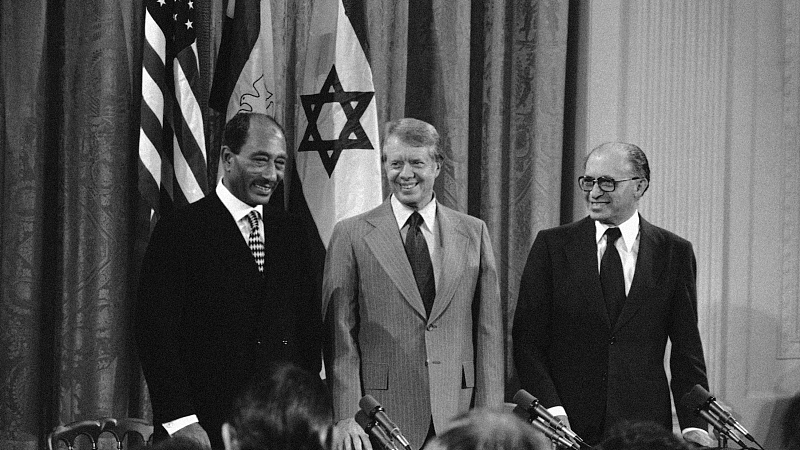
From left, Egyptian President Anwar Sadat, U.S. President Jimmy Carter and Israeli Prime Minister Menachen Begin gather in the East Room of the White House in Washington on September 17, 1978, to sign two documents containing an agreement between Israel and Egypt to terms designed to end their conflict. /CFP
From left, Egyptian President Anwar Sadat, U.S. President Jimmy Carter and Israeli Prime Minister Menachen Begin gather in the East Room of the White House in Washington on September 17, 1978, to sign two documents containing an agreement between Israel and Egypt to terms designed to end their conflict. /CFP
1978
Camp David Accords
The Camp David Accords were a historic agreement between Egypt and Israel signed at the Camp David presidential retreat. The accords led to the normalization of diplomatic relations between the two countries and the subsequent Egypt-Israel Peace Treaty in 1979. This groundbreaking agreement marked the first time an Arab nation officially recognized the state of Israel, and in return, Israel withdrew from the Sinai Peninsula, which it had occupied since the Six-Day War in 1967.

An Israeli soldier aims his rifle at a Palestinian woman holding a rock during a demonstration in which one Palestinian youth was shot dead in Gaza, on February 29, 1988 /Reuters
An Israeli soldier aims his rifle at a Palestinian woman holding a rock during a demonstration in which one Palestinian youth was shot dead in Gaza, on February 29, 1988 /Reuters
1987
First intifada
The first intifada was a significant Palestinian uprising against Israeli occupation that began in December 1987 and continued into the early 1990s. Sparked by frustration with Israeli policies, particularly in the West Bank and Gaza Strip, it featured widespread protests, civil disobedience, strikes and sporadic violence. It had a grassroots nature, with a notable absence of centralized leadership. The intifada raised international awareness of the Palestinian struggle and played a crucial role in fostering negotiations between Israelis and Palestinians.
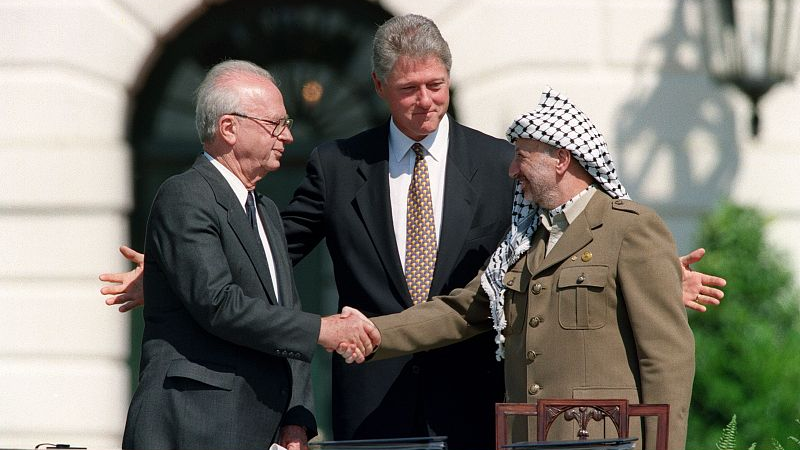
In this file photo taken on September 13, 1993, U.S. President Bill Clinton (C) stands between PLO leader Yasser Arafat (R) and Israeli Prime Minister Yitzahk Rabin as they shake hands for the first time at the White House in Washington DC, after signing the historic Israel-PLO Oslo Accords on Palestinian autonomy in the occupied territories. /CFP
In this file photo taken on September 13, 1993, U.S. President Bill Clinton (C) stands between PLO leader Yasser Arafat (R) and Israeli Prime Minister Yitzahk Rabin as they shake hands for the first time at the White House in Washington DC, after signing the historic Israel-PLO Oslo Accords on Palestinian autonomy in the occupied territories. /CFP
1993
Oslo Accords
The Oslo Accords, signed in 1993 and 1995, were a series of agreements between Israel and the Palestine Liberation Organization (PLO). Brokered by the United States and Norway, it laid the groundwork for limited Palestinian self-governance in the West Bank and Gaza Strip. The accords established the Palestinian Authority, which enabled the Palestinians to administer their own affairs in the Gaza Strip and West Bank.
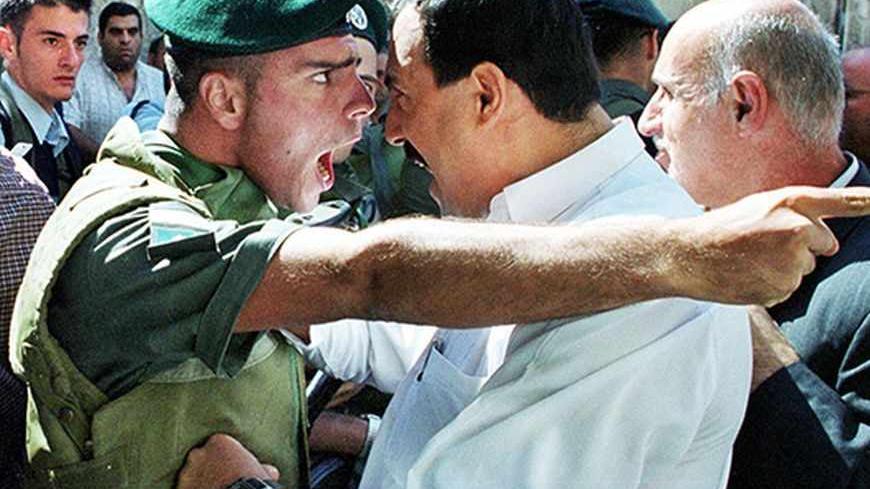
An Israeli border policeman and a Palestinian man scream at each other face-to-face in the Old City of Jerusalem, Oct. 13, 2000. /Reuters
An Israeli border policeman and a Palestinian man scream at each other face-to-face in the Old City of Jerusalem, Oct. 13, 2000. /Reuters
2000
Second intifada
Triggered by the provocative visit of Ariel Sharon to the Temple Mount in Jerusalem, the second intifada featured a wave of Palestinian protests, suicide bombings and Israeli military responses. It resulted in a substantial loss of life on both sides and widespread destruction. The violence and instability during this period had a profound impact on the Israeli-Palestinian conflict, contributing to a hardening of positions, a heightened sense of insecurity and further obstacles to peace negotiations.
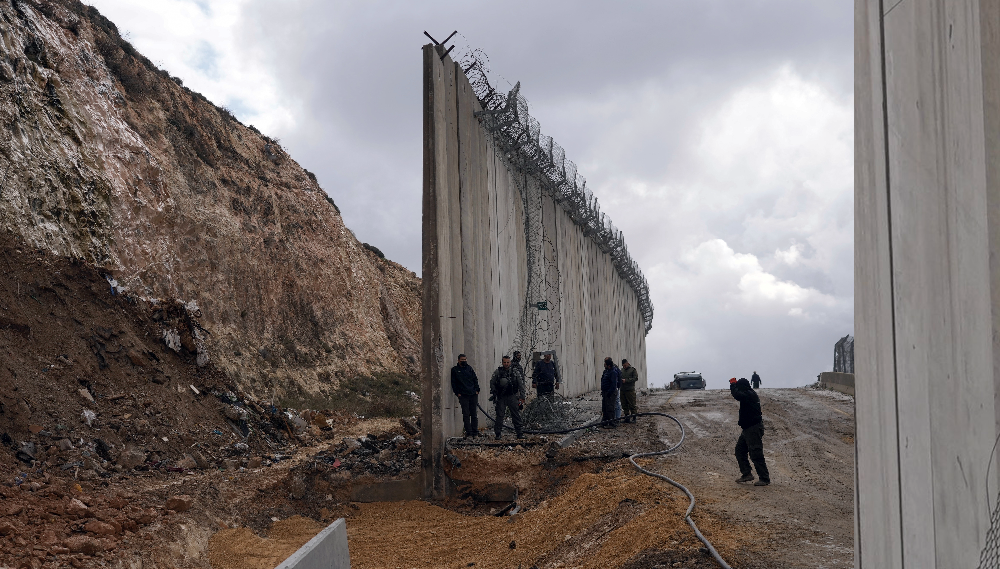
Workers rebuild a section of Israel's separation barrier after a part of it collapsed between Jerusalem and the West Bank village of A-Ram, February 6, 2022. /AP
Workers rebuild a section of Israel's separation barrier after a part of it collapsed between Jerusalem and the West Bank village of A-Ram, February 6, 2022. /AP
2002
Israel builds barrier
Israel's construction of a security barrier began in the early 2000s as a response to the second intifada. The barrier, consisting of fences and walls, is controversial because it, in parts, cut deep into Palestinian territories in the West Bank to protect Israeli settlements. Besides, many are cut off from Jerusalem and cannot get to work or school. In 2022, the barrier stretched over 700 kilometers, with parts of it replaced by concrete walls that rise nine meters above ground. Despite the order by Israel's Supreme Court to reroute, the barrier continues to impede the movement of Palestinians, affecting their daily lives in major ways.
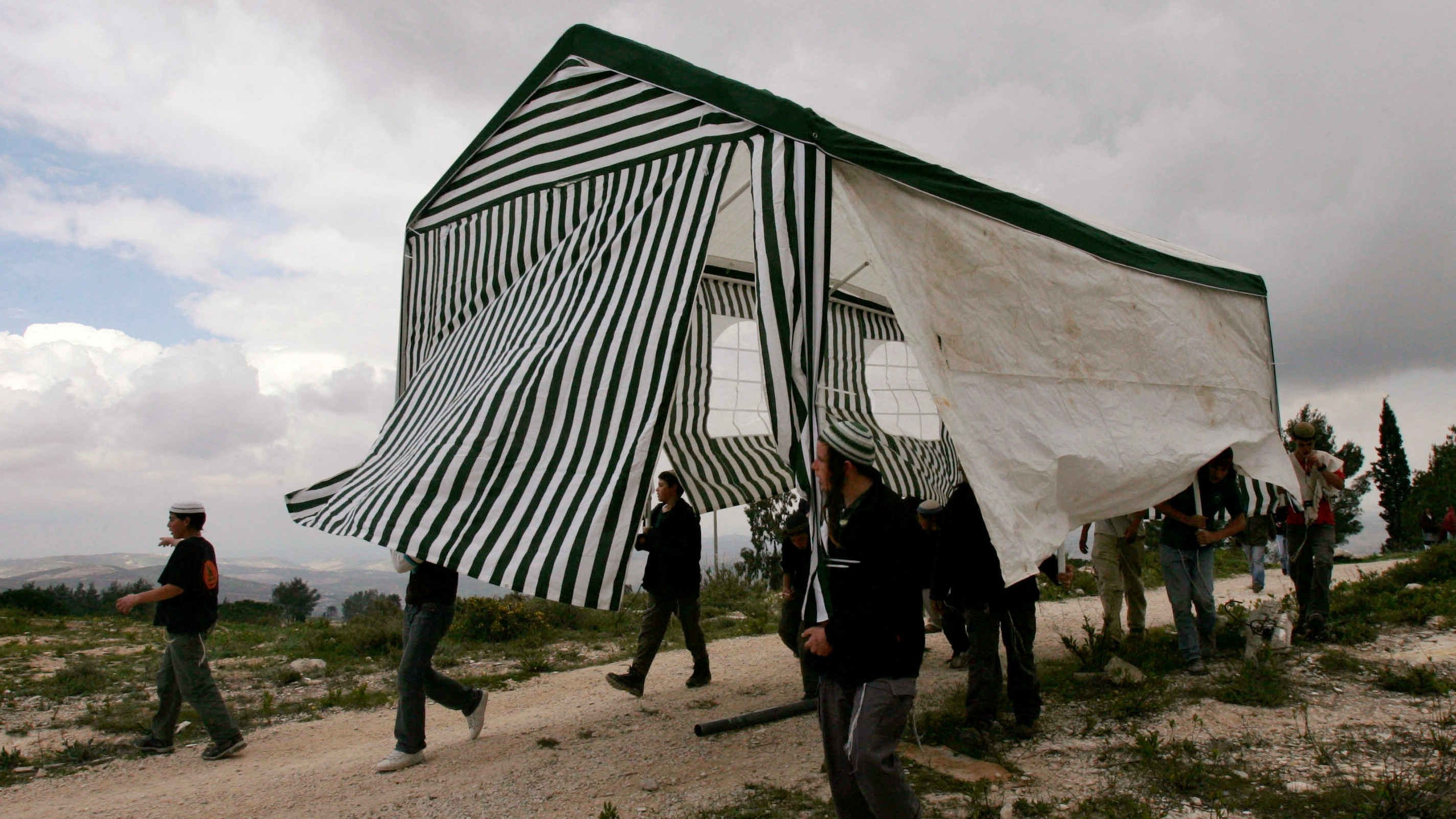
Israeli activists carry a tent in the abandoned Jewish settlement of Homesh, in the northern West Bank, March 27, 2007. /Reuters
Israeli activists carry a tent in the abandoned Jewish settlement of Homesh, in the northern West Bank, March 27, 2007. /Reuters
2005
Israel's disengagement with Gaza
In 2005, Israel, under Prime Minister Ariel Sharon, decided to withdraw its military forces and evacuate Israeli settlements in the Gaza Strip. Following the withdrawal, Israel maintained control over Gaza's borders, airspace and coastline, enforcing a restrictive blockade that impacted the flow of goods and people in and out of the territory.
Multiple Gaza conflicts
Periodic clashes between Israel and Hamas in Gaza result in casualties and destruction (e.g., 2008-2009, 2012, 2014).
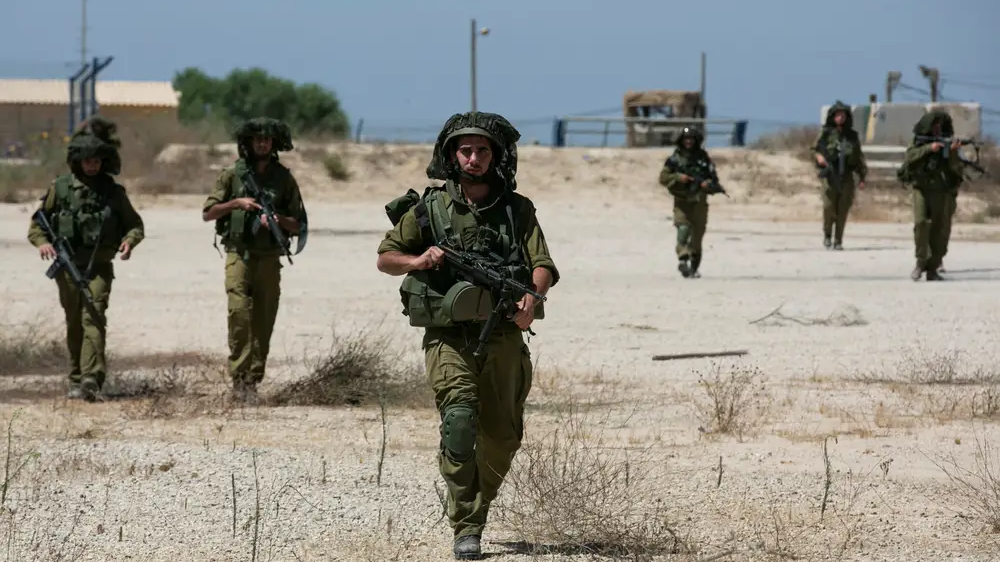
Israeli soldiers walk near the border with the central Gaza Strip, July 14, 2014. /Reuters
Israeli soldiers walk near the border with the central Gaza Strip, July 14, 2014. /Reuters
2014
Operation Protective Edge
Operation Protective Edge, conducted by Israel, involved extensive airstrikes on Gaza and a limited ground incursion. The conflict resulted in significant casualties, with thousands of Palestinians and dozens of Israelis killed. The operation represented a major escalation of tensions between both sides and drew international attention and condemnation for the extensive humanitarian crisis it caused in Gaza. A ceasefire agreement was eventually brokered by Egypt, ending the 50-day conflict but leaving the underlying issues of the Israeli-Palestinian conflict unresolved.
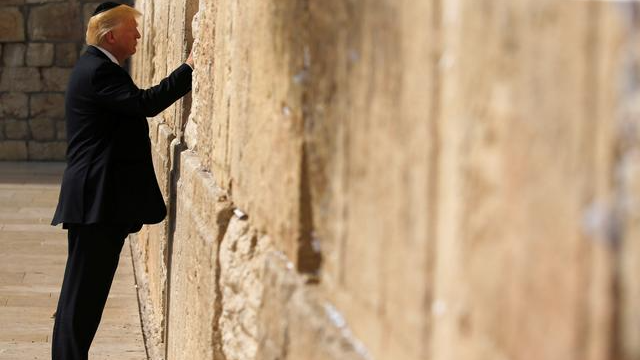
U.S. President Donald Trump prepares to leave a note at the Western Wall in Jerusalem, May 22, 2017. /Reuters
U.S. President Donald Trump prepares to leave a note at the Western Wall in Jerusalem, May 22, 2017. /Reuters
2017
U.S. recognizes Jerusalem as capital of Israel
Diverting from long-standing U.S. policy and international norms, the Donald Trump administration formally recognized Jerusalem as the capital of Israel. Many leaders, including those of Egypt, France, Saudi Arabia, Turkey and the United Kingdom, as well as the United Nations, condemned the unilateral move.
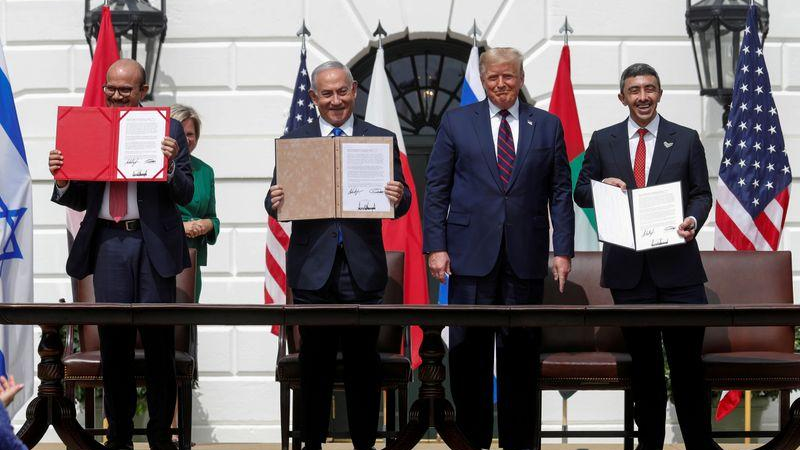
Bahrain's Foreign Minister Abdullatif Al Zayani, Israel's Prime Minister Benjamin Netanyahu and the United Arab Emirates' Foreign Minister Abdullah bin Zayed display their copies of signed agreements while U.S. President Donald Trump looks on as they participate in the signing ceremony of the Abraham Accords, normalizing relations between Israel and some of its Middle East neighbors in a strategic realignment of Middle Eastern countries against Iran, on the South Lawn of the White House in Washington, U.S., September 15, 2020. /Reuters
Bahrain's Foreign Minister Abdullatif Al Zayani, Israel's Prime Minister Benjamin Netanyahu and the United Arab Emirates' Foreign Minister Abdullah bin Zayed display their copies of signed agreements while U.S. President Donald Trump looks on as they participate in the signing ceremony of the Abraham Accords, normalizing relations between Israel and some of its Middle East neighbors in a strategic realignment of Middle Eastern countries against Iran, on the South Lawn of the White House in Washington, U.S., September 15, 2020. /Reuters
2020
Abraham Accords
The United Arab Emirates, Bahrain, Sudan and Morocco signed a series of agreements with Israel that normalized diplomatic relations. Israel also announced the suspension of its plans to annex territory in the West Bank.
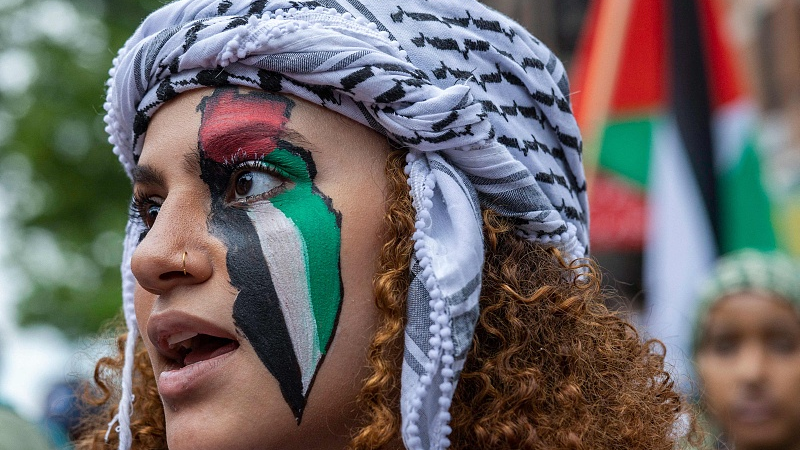
A Palestine rights supporter wears the colors of the Palestinian flag painted on her face during a march to mark the 75th anniversary of Nakba, or the "catastrophe," referring to the mass displacement of Palestinians following the creation of Israel, in Brooklyn, New York, May 13, 2023. /CFP
A Palestine rights supporter wears the colors of the Palestinian flag painted on her face during a march to mark the 75th anniversary of Nakba, or the "catastrophe," referring to the mass displacement of Palestinians following the creation of Israel, in Brooklyn, New York, May 13, 2023. /CFP
2021
Conflict reignites
In May, protests erupted over an anticipated decision by the Israel Supreme Court to evict six Palestinian families from a neighborhood in East Jerusalem. Despite international recognition of the area as being part of Palestine, Israel has annexed the area since 1980. Israeli police later stormed the Al-Aqsa Mosque and fired tear gas and rubber bullets, which escalated hostilities with Hamas and sparked wider protests in the region and around the world.